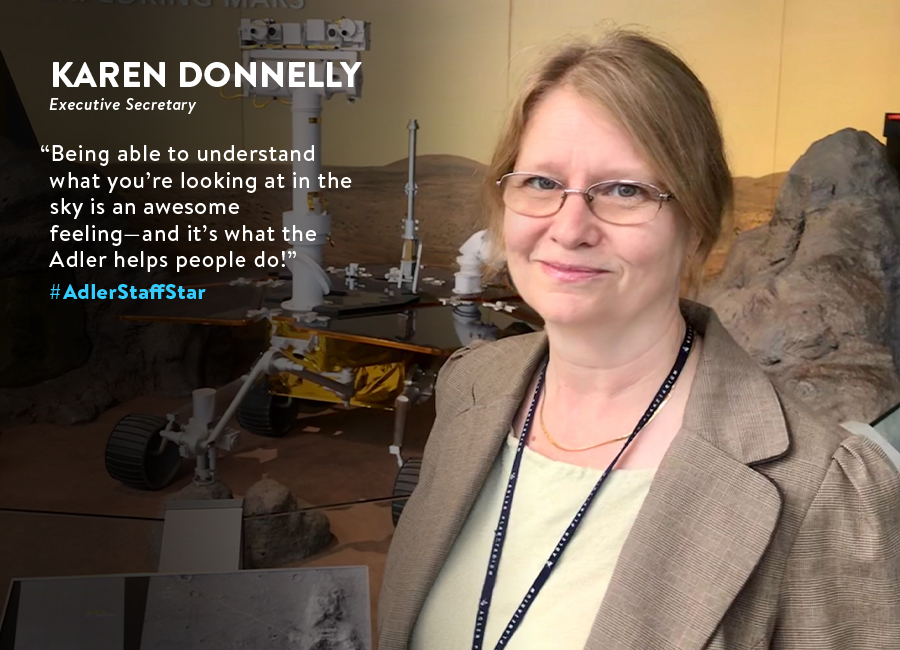Adler Skywatch: March 2019

Get ready to move your clocks ahead an hour and to welcome the season of Spring this month—March 2019.
Daylight Saving Time starts this year on the 10th at 2:00 a.m. local time. Move your clocks ahead one hour on this date. We’ll get that hour back on November 3, when Daylight Saving Time ends for the year.
The vernal equinox, marking the start of the s
In planetary action this month, look for Mars in the west-southwest skies about an hour after sunset. The evening of the 11th, it appears a few degrees to the right of a waxing crescent Moon. The last few days of the month, Mars appears near the Pleiades, a small, twinkling cluster of stars in the constellation Taurus. The “Red Planet” gets a little less bright every evening this month, since Earth is moving away from Mars in space. It sets in the west-northwest around midnight Central-Time.
Several planets are visible before sunrise this month. About four hours before dawn, the planet Jupiter is rising in the southeast sky, shining brighter than any of the stars around it. It’s near the dark side of a waning gibbous Moon the morning of the 27th.
About 90 minutes before sunrise, when Jupiter is slightly higher in the south-southeast, the planet Saturn is just above the southeast horizon. It’s not as bright as Jupiter, but still readily visible in a clear sky. Saturn appears near a waning crescent Moon the mornings of the 1st and the 29th.
Finally, as morning twilight brightens the sky, the brilliant planet Venus shines low in the east-southeast. The first two mornings of the month, Venus appears about 15 degrees to the lower-left of Saturn, with a slim waning crescent Moon nearby. But as the days pass, Venus rises later in the morning and moves further north along the horizon—and, thus, also appears to move further away from Saturn in the sky. By the end of the month, the two planets appear 45 degrees apart.
The planet Mercury appears so close to the Sun this month that it will be difficult, if not impossible, to see.
New Moon: March 6th
First Quarter Moon: March 14th
Full Moon: March 20th
Last Quarter Moon: March 27th
Please note: these descriptions are for the Chicago area, using Central time.







